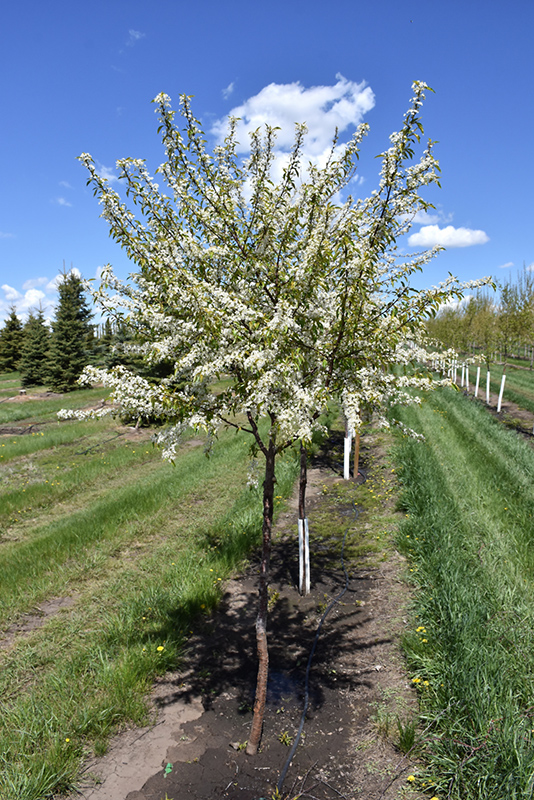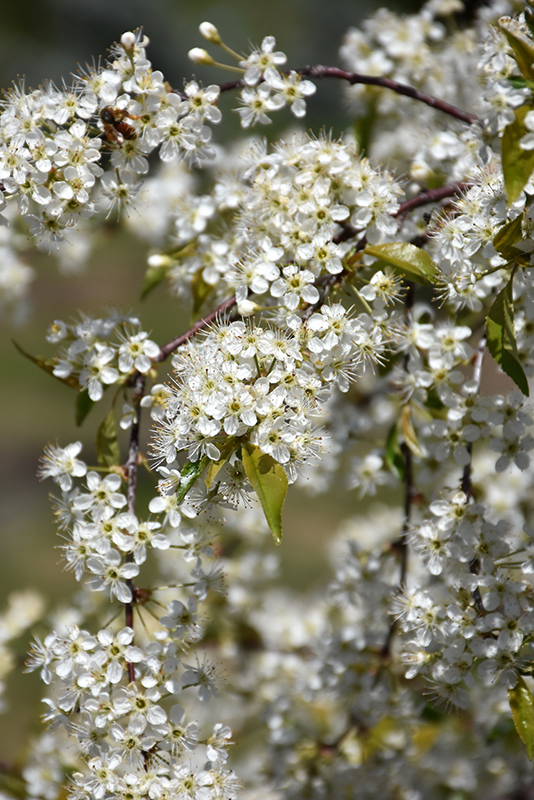Mary Liss Pincherry
Prunus pennsylvanica 'Mary Liss'
Height: 20 feet
Spread: 15 feet
Sunlight:
![]()
Hardiness Zone: 2a
Other Names: Wild Red Cherry, Fire Cherry
Description:
A pretty four season accent tree, ideal for smaller landscapes; showy white flowers in spring followed by red cherries in summer; superb fall color and showy reddish-bronze bark; full sun and well-drained soil
Ornamental Features
Mary Liss Pincherry is smothered in stunning clusters of fragrant white flowers hanging below the branches in mid spring before the leaves. The fruits are showy cherry red drupes carried in abundance in mid summer. It has forest green deciduous foliage. The pointy leaves turn an outstanding orange in the fall. The smooth antique red bark adds an interesting dimension to the landscape.
Landscape Attributes
Mary Liss Pincherry is a deciduous tree with a shapely oval form. Its average texture blends into the landscape, but can be balanced by one or two finer or coarser trees or shrubs for an effective composition.
This tree will require occasional maintenance and upkeep, and is best pruned in late winter once the threat of extreme cold has passed. It is a good choice for attracting birds to your yard. Gardeners should be aware of the following characteristic(s) that may warrant special consideration;
- Disease
Mary Liss Pincherry is recommended for the following landscape applications;
- Accent
Planting & Growing
Mary Liss Pincherry will grow to be about 20 feet tall at maturity, with a spread of 15 feet. It has a low canopy with a typical clearance of 2 feet from the ground, and is suitable for planting under power lines. It grows at a medium rate, and under ideal conditions can be expected to live for approximately 30 years. While it is considered to be somewhat self-pollinating, it tends to set heavier quantities of fruit with a different variety of the same species growing nearby.
This tree should only be grown in full sunlight. It does best in average to evenly moist conditions, but will not tolerate standing water. It is not particular as to soil type or pH. It is somewhat tolerant of urban pollution. This is a selection of a native North American species.




